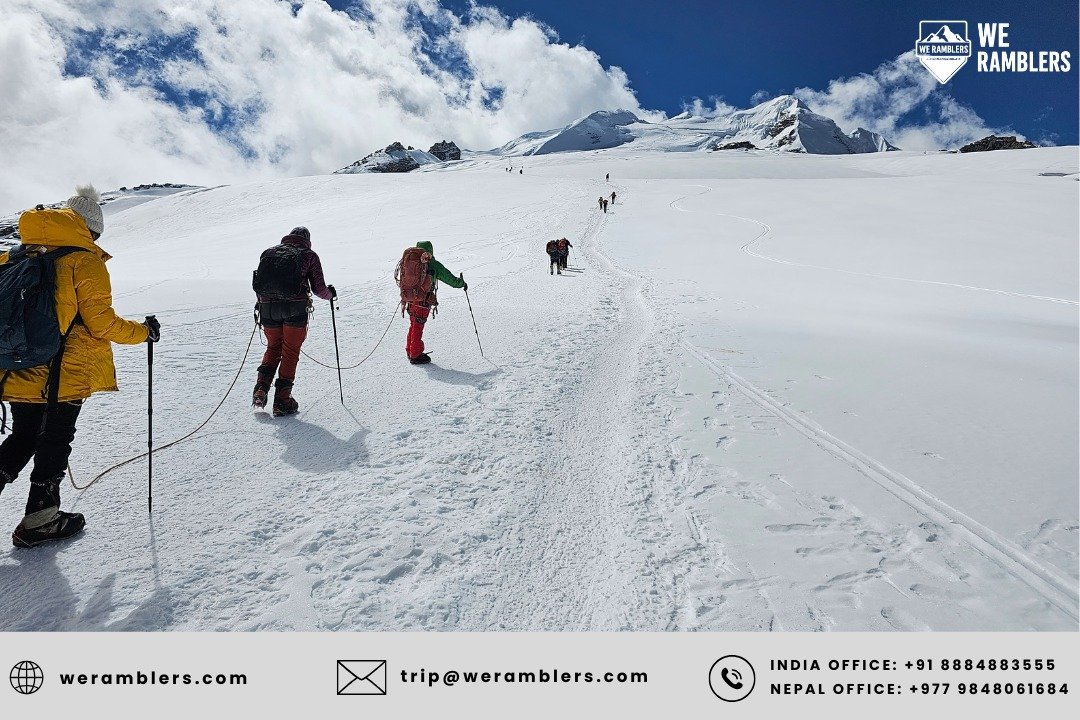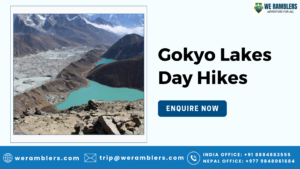Nepal Opens 97 Hidden Himalayan Peaks for Free Climbing While Everest Fees Rise
In a landmark decision that could reshape the future of Himalayan adventure travel, the Nepalese government has announced that 97 new peaks are now open for free climbing starting July 17, 2025. At the same time, the cost of climbing Mount Everest, the crown jewel of mountaineering, will rise sharply from $11,000 to $15,000 per climber beginning September 1, 2025.
This dual move aims to reduce overcrowding on Everest, diversify trekking destinations, and promote remote regions like Karnali and Sudurpashchim. For adventure seekers and trekking enthusiasts, this is not just news; it is an opportunity to explore Nepal’s hidden gems.
Nepal’s Big Announcement: 97 Peaks Now Free to Climb
Nepal is home to over thousands of mountains above 5,500 meters, but most climbers fix their eyes on Everest and a handful of famous peaks. To change this, the government has decided to waive climbing permit fees for 97 mountains located in the remote provinces of Karnali and Sudurpashchim.
- Number of peaks: 97
- Regions covered: 77 in Karnali, 20 in Sudurpashchim
- Altitude range: 5,870 meters – 7,132 meters
- Duration: Free for the next two years (until July 2027)
This announcement, revealed in cabinet meeting minutes made public on August 3, 2025, is designed to draw mountaineers to offbeat regions while easing pressure on Everest.
Why This Move Matters for Trekkers and Climbers
Nepal’s decision has several implications for global adventurers:
Budget-Friendly Expeditions: Waived fees mean climbers can attempt high-altitude peaks without spending thousands on government royalties.
Opportunity Beyond Everest: Crowds, rising costs, and environmental strain make Everest more challenging. These free peaks provide exciting alternatives.
Unexplored Routes: Many of these mountains are “virgin peaks” that have either rarely or never been climbed.
Training Grounds: With the new proposal requiring climbers to first summit a 7,000 m mountain before attempting Everest, these peaks are perfect preparation grounds.
For adventure seekers, it’s a golden window of opportunity.
Spotlight on Key Peaks in Karnali & Sudurpashchim
Api (7,132 m) – The Remote Giant
Api, the highest mountain in the Sudurpashchim Province, rises in commanding isolation at 7,132 meters, overlooking a region that remains one of Nepal’s least explored frontiers. Surrounded by rolling alpine meadows, glacial lakes, and icy ridgelines, the mountain presents a raw and untouched grandeur rarely found in the more commercialized trekking regions of Nepal.
For seasoned climbers, Api represents the perfect blend of high-altitude challenge and remote wilderness adventure, far from the crowded trails of the Everest and Annapurna regions. Its sheer prominence and panoramic views across Tibet and India make it a once-in-a-lifetime expedition target.
Api West (7,076 m) – The Lesser-Known Sister
Just to the west of Api stands Api West, a 7,076-meter peak that shares the same dramatic skyline yet remains even more mysterious. Few climbing parties have ventured here, and its technical ridges and ice fields offer enormous potential for exploratory mountaineering.
Unlike peaks with well-documented routes, Api West invites climbers to craft their own line of ascent, echoing the golden age of Himalayan exploration. Its remoteness ensures complete solitude, giving adventurers a chance to experience the Himalayas in their purest form. For those who dream of conquering a peak rarely touched by human footsteps, Api West is a hidden treasure.
Saipal (7,030 m) – The Jewel of Karnali
Further east lies Saipal, a 7,030-meter giant whose pyramid-shaped summit has long captured the imagination of mountaineers. Nestled in the Karnali Province, Saipal is as majestic as it is mystical, surrounded by lush valleys, glaciers, and traditional villages where ancient culture thrives. Despite its breathtaking beauty, Saipal remains under-visited compared to Nepal’s better-known peaks, making it a rewarding destination for climbers who crave both altitude and solitude.
The mountain’s symmetrical form dominates the horizon, and expeditions here often blend physical challenge with cultural discovery, offering trekkers a rare chance to interact with remote Himalayan communities.
Other Remote Peaks
Beyond these three giants, the Karnali and Sudurpashchim provinces are dotted with dozens of unclimbed or seldom-attempted mountains ranging from 5,870 meters to nearly 6,900 meters. These peaks may not boast the fame of Everest or Annapurna, but they embody the essence of true Himalayan adventure: rugged terrain, unexplored routes, and immersion in some of Nepal’s most authentic landscapes and cultures. For trekkers and climbers seeking pioneering challenges away from the beaten path, these remote summits represent the future of Himalayan exploration.
Challenges of Trekking in Remote Regions
While the offer is enticing, climbers should know that these regions pose unique challenges:
- Minimal Infrastructure: Few roads, limited lodges, and scarce facilities mean expeditions must be self-sufficient.
- Harsh Terrain: Deep valleys, long trails, and unpredictable weather require endurance and resilience.
- Safety Concerns: Avalanches, landslides, and remote access make professional guidance essential.
- Logistics: Transporting gear, setting up base camps, and arranging permits require local expertise.
This is where We Ramblers comes in, ensuring climbers are safe, supported, and fully equipped.
The Everest Factor: Rising Fees and New Rules
While 97 peaks are free, Everest itself is becoming more exclusive. Starting September 1, 2025, the cost of an Everest climbing permit will increase from $11,000 to $15,000 per person.
In addition, Nepal’s parliament is debating a new rule: climbers must first summit at least one 7,000 m peak within Nepal before attempting Everest. This means climbers will naturally look toward Saipal, Api, and Api West, all of which are now royalty-free.
This could shift mountaineering trends significantly, with more climbers choosing these “hidden peaks” first before challenging Everest.
Impact on Local Communities & Sustainable Tourism
Opening these peaks is not just about mountaineering; it’s about revitalizing remote communities.
- Job Creation: Guides, porters, cooks, and drivers will see new opportunities.
- Local Businesses: Homestays, tea houses, and transport services can thrive.
- Sustainable Growth: By spreading tourism beyond Everest, pressure on fragile ecosystems is reduced.
- Cultural Exchange: Trekkers experience authentic local traditions, enriching their journey while supporting communities.
For Karnali and Sudurpashchim, this could be a turning point in sustainable adventure tourism.
Why Now is the Best Time to Trek in Karnali & Sudurpashchim
There has never been a better time to explore Nepal’s hidden Himalayan treasures:
- Free permits for two years reduce costs significantly.
- Virgin peaks offer adventure that few have experienced.
- Growing global interest in offbeat trekking destinations ensures you’ll be part of a pioneering wave.
- Perfect timing for those preparing for Everest under the new rules.
How We Ramblers Can Help You Explore These Peaks
At We Ramblers, we specialize in taking trekkers and climbers beyond the beaten path. Here’s what we offer:
- Expert Guides: Certified and experienced Sherpas and local guides.
- Customized Packages: Expeditions tailored to your fitness, budget, and goals.
- Safety First: From acclimatization schedules to emergency backup plans.
- Sustainability Focus: Eco-friendly practices that respect local culture and environment.
- Authentic Experience: Trekking through remote villages, cultural immersion, and untouched trails.
If you want to explore Nepal’s hidden peaks safely and meaningfully, We Ramblers is your trusted partner.
FAQs on Nepal’s New Peaks for Mountain Climbing
1. Which peaks are free to climb in Nepal?
Nepal has opened 97 peaks in the Karnali and Sudurpashchim provinces for free climbing from July 2025 to July 2027.
2. How long will the free permit last?
The royalty exemption will be valid for two years.
3. Do I still need a guide for these peaks?
Yes. While permits are free, trekking in remote regions requires professional guides, logistics support, and safety planning.
4. What is the new cost of climbing Everest?
From September 1, 2025, the Everest climbing permit will rise from $11,000 to $15,000 per climber.
5. What are the best peaks to climb before Everest?
Api (7,132 m), Api West (7,076 m), and Saipal (7,030 m) are recommended as training peaks before Everest.
6. How can We Ramblers help with logistics?
We provide end-to-end expedition support: guides, porters, equipment, safety management, and culturally immersive experiences. Contact us now for full itinerary details.
Final Thoughts
Nepal’s decision to open 97 hidden Himalayan peaks for free climbing marks a historic opportunity for mountaineers and trekkers worldwide. While Everest is becoming more expensive and regulated, Karnali and Sudurpashchim’s untouched peaks now stand ready to welcome adventurers. For climbers seeking authentic exploration, cultural immersion, and sustainable travel, the next two years are golden.





